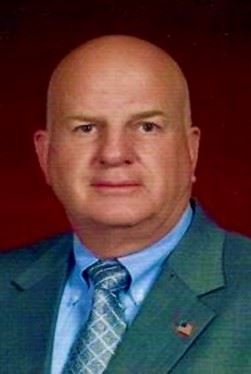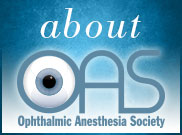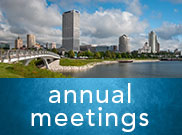 Looking back on the 37th Annual OAS Scientific Meeting
Looking back on the 37th Annual OAS Scientific Meeting
The 37th Annual OAS Scientific Meeting held in Houston, Texas, from February 9-10, 2024, was a resounding success, drawing over 100 attendees from various disciplines within ophthalmology including ophthalmologists, anesthesiologists, CRNAs, and RNs. The event boasted small group settings that fostered highly lively discussions, creating an environment conducive to meaningful interactions.
Attendees were treated to clinically focused sessions featuring diverse speakers and subjects, with excellent presentations addressing current and emerging issues in the field. The quality of content was underscored by the impressive lineup of speakers who delivered insightful lectures. Some of the speakers were experts in the local Houston area, providing a fresh local perspective to the worldly audience.
Notably, the meeting emphasized networking opportunities, with panel discussions facilitating personal interaction between speakers and the audience. The event was praised for its organization, striking a balance between being informative yet not overly large.
Friday's agenda included sessions covering a range of topics, from clinical to pediatrics, complemented by practical education sessions such as active shooter training. The day concluded with a welcome reception, providing attendees with the chance to network and learn from industry supporters, Eagle Pharmaceuticals, Halozyme, Harrow, Melt Pharmaceuticals, and Orbital Blocks.
Saturday continued the momentum with enlightening discussions on OR efficiencies, glaucoma, and international perspectives from Greece, India and UK. The conference concluded on a high note with a fun reception at Puttshack, reinforcing bonds formed during the event with games and prizes.
A smaller group of esteemed practitioners participated in a hands on block workshop. Read about it below!
Overall, the 37th Annual OAS Scientific Meeting left attendees enriched with knowledge, inspired by lively discussions, and connected within the ophthalmic community.
The 38th Annual OAS Scientific Conference will be announced soon for February 2025. Stay tuned!

 Unlocking Vision: Recap of the 1st Inaugural Ophthalmic Block Workshop Post-OAS Annual Meeting
Unlocking Vision: Recap of the 1st Inaugural Ophthalmic Block Workshop Post-OAS Annual Meeting
On February 11th, amidst the energy of the OAS Annual Meeting, a remarkable event unfolded — the inaugural Ophthalmic Block Workshop. This educational endeavor aimed to delve deep into the intricacies of orbital anatomy and the application of ophthalmic blocks, providing practitioners with invaluable skills and knowledge.
The workshop commenced with a comprehensive review of orbital anatomy, laying down the foundational understanding necessary for precise and effective ophthalmic procedures. Participants were guided through the intricate structures of the eye and its surrounding tissues, fostering a profound appreciation for the anatomical complexity involved.
As the session progressed, the focus shifted towards practical application, with hands-on simulation training. Participants were immersed in the intricacies of peri/retrobulbar and peribulbar blocks, exploring both intraconal and extraconal approaches. Under expert guidance, they practiced needle placement techniques, honing their skills to ensure optimal patient safety and efficacy.
A highlight of the workshop was the collaborative learning environment, with 24 dedicated practitioners coming together to expand their knowledge and expertise. Among them were 6 active OAS members, showcasing a commitment to continuous professional development. Additionally, the workshop attracted 18 new members eager to acquire essential skills in ophthalmic blocks.
Feedback from attendees echoed the success of the workshop, with one participant remarking, "This was the best learning experience on proper needle placement to maintain patient safety." Another highlighted the invaluable insight gained, stating, "I learned the three-step process of blocking and an in-depth anatomy of the eye, which will greatly enhance my practice."
Many thanks to the experienced instructors:
Randy Harvey, BS, RRT, APRN, CRNA, FANA
Matthew Springer, DNP,CRNA
Adrian Kwa, MD, Nottingham University Hospitals NHS Trust, UK


Clyde Tempel, CRNA Obituary

Clyde Kent Tempel, age 82, of Rodgers, AR, died Monday, March 4, 2024 at his residence.
Clyde served for six years in the US Army Reserve from 1961 until 1967.
He graduated from Southwest Missouri School of Anesthesia in Springfield, MO in 1970. He practiced in Northwest Arkansas from 1971 until his retirement in 2019. Clyde was a member of the AANA his entire career and served on many committees and the board. He was instrumental in developing many of the benefits we now have as CRNA’s.
He was also a charter member of the Ophthalmic Anesthesia Society and served on the board. He believed in the mission of the OAS to advance knowledge and safety in ophthalmic anesthesia. He made many friends during his time with the OAS. He encouraged everyone he knew to become a member, because he felt it was so important. He attended every meeting faithfully and shared what he learned with others. He was a great friend to OAS and he will be missed.
In the news

Repository





